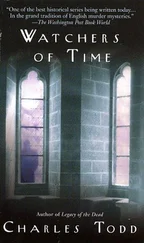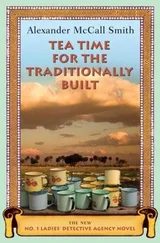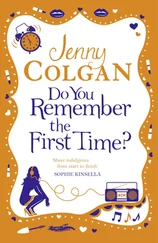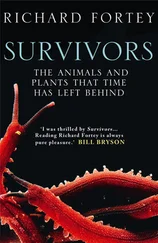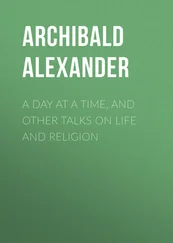Alexander Todd - A Time to Remember
Здесь есть возможность читать онлайн «Alexander Todd - A Time to Remember» весь текст электронной книги совершенно бесплатно (целиком полную версию без сокращений). В некоторых случаях можно слушать аудио, скачать через торрент в формате fb2 и присутствует краткое содержание. Город: Cambridge, Год выпуска: 1983, ISBN: 1983, Издательство: Cambridge University Press, Жанр: Химия, Биографии и Мемуары, на английском языке. Описание произведения, (предисловие) а так же отзывы посетителей доступны на портале библиотеки ЛибКат.
- Название:A Time to Remember
- Автор:
- Издательство:Cambridge University Press
- Жанр:
- Год:1983
- Город:Cambridge
- ISBN:0 521 25593 7
- Рейтинг книги:3 / 5. Голосов: 1
-
Избранное:Добавить в избранное
- Отзывы:
-
Ваша оценка:
- 60
- 1
- 2
- 3
- 4
- 5
A Time to Remember: краткое содержание, описание и аннотация
Предлагаем к чтению аннотацию, описание, краткое содержание или предисловие (зависит от того, что написал сам автор книги «A Time to Remember»). Если вы не нашли необходимую информацию о книге — напишите в комментариях, мы постараемся отыскать её.
A Time to Remember — читать онлайн бесплатно полную книгу (весь текст) целиком
Ниже представлен текст книги, разбитый по страницам. Система сохранения места последней прочитанной страницы, позволяет с удобством читать онлайн бесплатно книгу «A Time to Remember», без необходимости каждый раз заново искать на чём Вы остановились. Поставьте закладку, и сможете в любой момент перейти на страницу, на которой закончили чтение.
Интервал:
Закладка:
I also attended in Madras the opening of the National Leather Research Laboratory - a hilarious afternoon. The opening ceremony was performed by Sir C. V. Raman, who devoted his remarks to the iniquity of cow slaughter, and claimed that the feet and ankles of pretty girls should be visible and not covered up by leather (or indeed anything else)! I thought the Director of the new laboratory was going to have a stroke, but he managed to restrict himself to a blistering attack on Raman who did not, I fear, take it at all kindly. To complete the afternoon the lights fused when the platform party was viewing the tannery, and its members had to stand in the dark for about ten minutes, not daring to move on the narrow walkways they were traversing between the somewhat malodorous tanning pits.
When I got to Delhi at the end of my trip, Bhatnagar was anxious that I should talk with Pandit Nehru. This, it appeared, could not be arranged until the day after I was supposed to leave for London. After much fussing I was transferred to a flight two days later on the Comet, which was then the great novelty in air transportation. (Incidentally I did fly home on it, and found it an exciting experience and a portent of things to come. I would perhaps have enjoyed it less had I known that, only a week or so later, the plane I flew in was to disintegrate over the Mediterranean because of metal fatigue!) I went to the Prime Minister's house for lunch and found him somewhat distraught on my arrival. He told me he had had a bad morning. First of all he had received the Persian leader Mossadeq, who, he said, was very difficult to deal with since, whenever one said anything he didn't like, Mossadeq would retire to a corner and weep. Secondly, when Mossadeq had gone Nehru had returned to his study to find that a monkey had got in through an open window and scattered his papers all over the room. However, he quickly recovered his good humour, and we had an interesting talk about India and what science and technology might do for it. His daughter, Indira Gandhi, was hostess and I found her very impressive; indeed from that day onwards I never had much doubt about who would succeed Nehru when the time came.
Shanti Bhatnagar had a cousin, Colonel S. S. Bhatnagar, a well-known medical man in Bombay, and, through him, on this trip I met a number of people who became fast friends. In particular I think of Dr K. A. Hamied, the owner of a flourishing pharmaceutical company, Cipla Ltd. He was a remarkable man. A Muslim from the Central Provinces, he had taken his chemical degree at the Muslim University in Aligarh and then gone to Berlin for his doctorate. There he met his wife, a Polish girl, and, after they were married, he returned to a university lectureship at Aligarh. He very soon found that they simply could not live on the pittance he was paid, so he resigned and, with his wife, set off for Bombay and settled into a hovel in the outskirts of the city (just as many people still do today). At this point he possessed 100 rupees, and, with them, he started to make and sell love philtres, indigestion cures, aphrodisiacs and so on. Out of this grew his company, and he became in due course a wealthy man. He was a member of the Congress Party and a follower of Gandhi, and had several spells in prison in the years before independence. When independence did come he elected to stay in Bombay although a Muslim; he did not have any trouble on that account, and was, indeed, Sheriff of Bombay for some years. He was, as I have said, a remarkable man and I enjoyed his friendship until his sudden death some years ago. In 1953 he introduced me to his son Yusuf whom he was determined to send to Cambridge to study chemistry under me. This Yusuf did, and did it well, with a first-class degree and a Ph.D. He has the same drive and entrepreneurial quality as his father in addition to being a first-class chemist, and, under him, Cipla has gone from strength to strength as an ethical pharmaceutical company with its own research and development department.
In the following year, 1954, shortly after receiving a knighthood in the Birthday Honours, I spent the Fall term (September-December) at the Massachusetts Institute of Technology as Arthur D. Little Visiting Professor of Chemistry and gave a course of lectures on vitamins, coenzymes and nucleic acids. These, for some reason, were a great success and, twice weekly, my audience included most of the chemical and biochemical staff, research students and senior undergraduates from both M.I.T. and Harvard. A by-product of this was a minor flood of American postgraduate students in subsequent years in my laboratories in Cambridge. It was a most enjoyable visit; my wife Alison was able to spend a substantial part of the term with me, and we rented a service flat in the old Hotel Continental in Cambridge not far from Harvard Square; there we could, and did, entertain our numerous friends - the Woodwards, Bartletts, Blochs, Buchanans, Westheimers, Sheehans, Copes and also the W. S. Johnsons (who were on sabbatical leave from Wisconsin). At the end of our stay we had a hilarious farewell party; photographic and other records of that and other parties of the period are still highly prized possessions of a number of the participants. I saw a lot of R. B. Woodward during this stay, and our friendship became even closer. As I have already mentioned, Bob was a remarkable man with a devotion to organic chemistry I have never seen equalled by anyone else, coupled with a prodigious memory, an enormous capacity for hard work, and more than a streak of genius. In those days he worked long hours in the laboratory, and his research seminars were already famous. He used to hold them in his room in the Converse Laboratory at Harvard late in the evening, and continue them into the small hours. It was during these seminars that many of his brilliant ideas were advanced, apparently 'off the top of his head'. Needless to say, not all of them were; they were, more often than not, the result of exhaustive reading and study, but it was one of his characteristics that he liked to adopt the pose of a genius who plucked ideas out of the air. The same affectation could be observed in his lectures. He was no mean actor, and his famous little box of coloured chalks with which he meticulously drew chemical formulae on the blackboard (in those days he never used slides), and the absence of any lecture notes despite the inordinate length of his lectures, all helped to conceal from his audiences the amount of hard work he put into lecture preparation. But this foible did not detract from his brilliance, nor did it conceal from those of us who knew him the loyal and generous friend behind it. Woodward was, I believe, the greatest organic chemist of his generation, and his sudden death in 1979 was a great loss to science.
Shortly before the end of our stay at M.I.T. I had a message from the Colonial Products Council in London (of which I was a member) asking me to go down to Trinidad on my way home, to look at some problems in their cocoa research establishment, and, incidentally, to visit the sugar research laboratory at the Imperial College of Tropical Agriculture. We left New York at a temperature of — 5 °C and found ourselves a few hours later in Trinidad at + 30 °C - a rather trying transition dressed as we were in clothing more appropriate to the former. We lodged at the Imperial College at St Augustine with Dr Herklots, the Director, and his wife, and spent an enjoyable few days discharging the tasks allotted to me (which were hardly arduous). Trinidad was an entirely different kind of place from anything I had seen before - a tropical colonial possession with a multiracial population much given to laughter, and to singing and dancing to the music of steel bands; it also possessed some of the most reckless taxi-drivers I have ever encountered.
By the end of 1954 our collaborative work on the structure of vitamin B12 with Dorothy Hodgkin was well advanced. Work on the same subject was, of course, being intensively pursued by Karl Folkers and his group at Merck & Co. Inc. at Rahway, New Jersey, and, while I was at M.I.T., I was invited to visit the Merck research laboratories to talk informally about vitamin B12; it turned out to be rather heavy going, for it very quickly became evident that although the Merck group wanted to learn all I knew, ideas of commercial secrecy made them determined to give me no information of any value about their own work. Needless to say, this attitude caused me to adopt a similar stance, and so we succeeded in getting nowhere. Although it was frustrating at the time, it seems rather ridiculous in retrospect. We - or perhaps better said Dorothy -finally fixed the structure of B12 in the summer of 1955. That year the International Union of Pure and Applied Chemistry was holding a Congress in Zurich, at which I was present. The Congress president was Paul Karrer, Professor of Organic Chemistry at the University of Zurich, a man well known to be at daggers drawn with Leopold Ruzicka, his opposite number at the Eidgenossische Technische Hochschule (E.T.H.) also in Zurich. The B12 structure had been completed too late for inclusion in the Congress programme - my recollection is that we published it in Nature during or just after the Zurich meeting. I soon found myself in a difficult situation. Both Ruzicka and Karrer were my friends and I found myself rather delicately placed; Ruzicka wanted me to speak at the E.T.H. on B12 at the same time as a major Congress lecture was to be given at the University on the other side of the road. Ruzicka's idea was that everybody would flock to B12, and leave the other lecture with Karrer in the chair sadly depleted. I had to be firm about it, and, although I did in fact give the first public presentation of the B12 story in the E.T.H., I did so after the formal Congress lectures were finished and so avoided a real rumpus.
Читать дальшеИнтервал:
Закладка:
Похожие книги на «A Time to Remember»
Представляем Вашему вниманию похожие книги на «A Time to Remember» списком для выбора. Мы отобрали схожую по названию и смыслу литературу в надежде предоставить читателям больше вариантов отыскать новые, интересные, ещё непрочитанные произведения.
Обсуждение, отзывы о книге «A Time to Remember» и просто собственные мнения читателей. Оставьте ваши комментарии, напишите, что Вы думаете о произведении, его смысле или главных героях. Укажите что конкретно понравилось, а что нет, и почему Вы так считаете.

